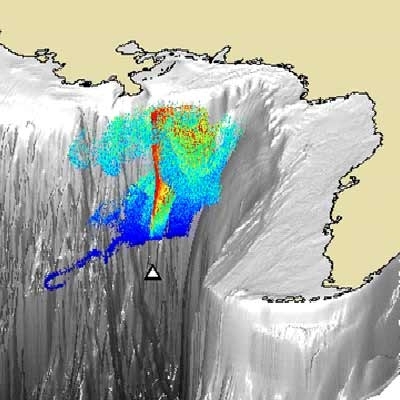
How did dispersants impact subsea oil transport?
Evolution of the Macondo Well Blowout: Simulating the Effects of the Circulation and synthetic Dispersants on the Subsea Oil Transport, Environmental Science and Technology
During the Deepwater Horizon incident, crude oil flowed into the Gulf of Mexico from 1522 m underwater. In an effort to prevent the oil from rising to the surface, synthetic dispersants were applied at the wellhead. However, uncertainties in the formation of oil droplets and difficulties in measuring their size in the water column, complicated further assessment of the potential effect of the dispersant on the subsea-to-surface oil partition. We adapted a coupled hydrodynamic and stochastic buoyant particle-tracking model to the transport and fate of hydrocarbon fractions and simulated the far-field transport of the oil from the intrusion depth. The evaluated model represented a baseline for numerical experiments where we varied the distributions of particle sizes and thus oil mass. The experiments allowed to quantify the relative effects of chemical dispersion, vertical currents, and inertial buoyancy motion on oil rise velocities. We present a plausible model scenario, where some oil is trapped at depth through shear emulsification due to the particular conditions of the Macondo blowout. Assuming effective mixing of the synthetic dispersants at the wellhead, the model indicates that the submerged oil mass is shifted deeper, decreasing only marginally the amount of oil surfacing. In this scenario, the oil rises slowly to the surface or stays immersed. This suggests that other mechanisms may have contributed to the rapid surfacing of oil–gas mixture observed initially. The study also reveals local topographic and hydrodynamic processes that influence the oil transport in eddies and multiple layers. This numerical approach provides novel insights on oil transport mechanisms from deep blowouts and on gauging the subsea use of synthetic dispersant in mitigating coastal damage.


